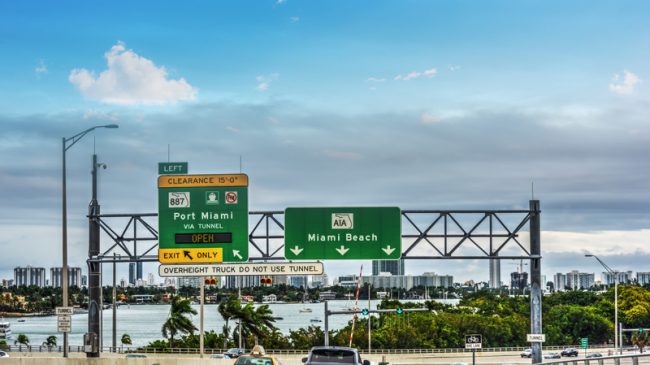Mobility in Southeast Florida (the urbanized portions of Miami-Dade, Broward and Palm Beach Counties) has worsened dramatically over the past three decades.Today residents of this region waste 141 million hours per year delayed in congested traffic, at an estimated annual cost (in wasted time and fuel) of $3.3 billion.
Unfortunately, by 2035, mobility will be even worse. According to figures from the region’s 2035 long-range transportation plan, as Southeast Florida adds 36% more people during the next 25 years, congestion will increase to be greater than what is experienced today in Los Angeles-the most congested metro area in America. The already low rush-hour speeds will decline another 20% by 2035 if the long-range plan is implemented as written.
That plan puts a major emphasis on alternatives to driving-transit, bicycling and walking. In fact, of the $58 billion available for transportation between 2015 and 2035, the plan devotes 62% to improving and operating various forms of transit. Unfortunately, if the plan is implemented as written, by 2035 a smaller fraction of all trips (2.6%) will be made via transit than the 2.9% made via transit today. During peak commuting times, transit’s share of trips will increase-but only from today’s 3.7% to 4.7%. Driving alone will remain the overwhelming mode of commuting, says the plan, decreasing only slightly from today’s 81.4% to 80% in 2035.
This report seeks to answer the question: Can’t Southeast Florida do better than that? A key innovation that has been implemented in a small way in this region could hold the key. Variably priced express lanes have been added to I-95 in Miami-Dade County, and have been a big success. Generally referred to as “managed lanes,” these lanes provide uncongested travel options for buses and motorists. In the I-95 corridor, they have produced dramatically better mobility, including much faster and more reliable express bus service between Miami and Fort Lauderdale.
Based on 18 months of study, with the cooperation of the region’s transportation agencies, we are proposing a comprehensive approach to improving Southeast Florida’s mobility. The plan includes four key components:
- A region-wide network of expressway managed lanes (MLs) like those on I-95, encompassing 302 route-miles and 1,117 lane-miles;
- Upgrades for 14 key arterials (107 route-miles) with underpasses at major signalized intersections, an innovation we call “managed arterials” (MAs);
- Premium bus rapid transit (BRT) as in the current long-range plan, but operating mostly on the “virtually exclusive busways” made possible by the network of MLs and MAs, rather than on politically dubious bus-only lanes;
- A series of system operational improvements, including extensive expressway ramp metering and further expansion of traffic signal coordination.
The proposed network of MLs and MAs was modeled by FDOT, using their regional transportation model (SERPM 6.5).
The modeling compared the traffic situation in 2035 with (a) the infrastructure that would exist under the current long-range plan and (b) that network with the addition of our proposed MLs and MAs. The most important finding was that vehicle hours of delay (VHD) in 2035 would be 13% less with the proposed ML/MA network in place, all other things equal. The value of time and fuel savings due to this reduced congestion would be $1.35 billion per year. And because better mobility directly increases a metro area’s economic productivity, we estimate that the gross regional product of Southeast Florida would be $3.5 billion per year greater thanks to this increased mobility.

